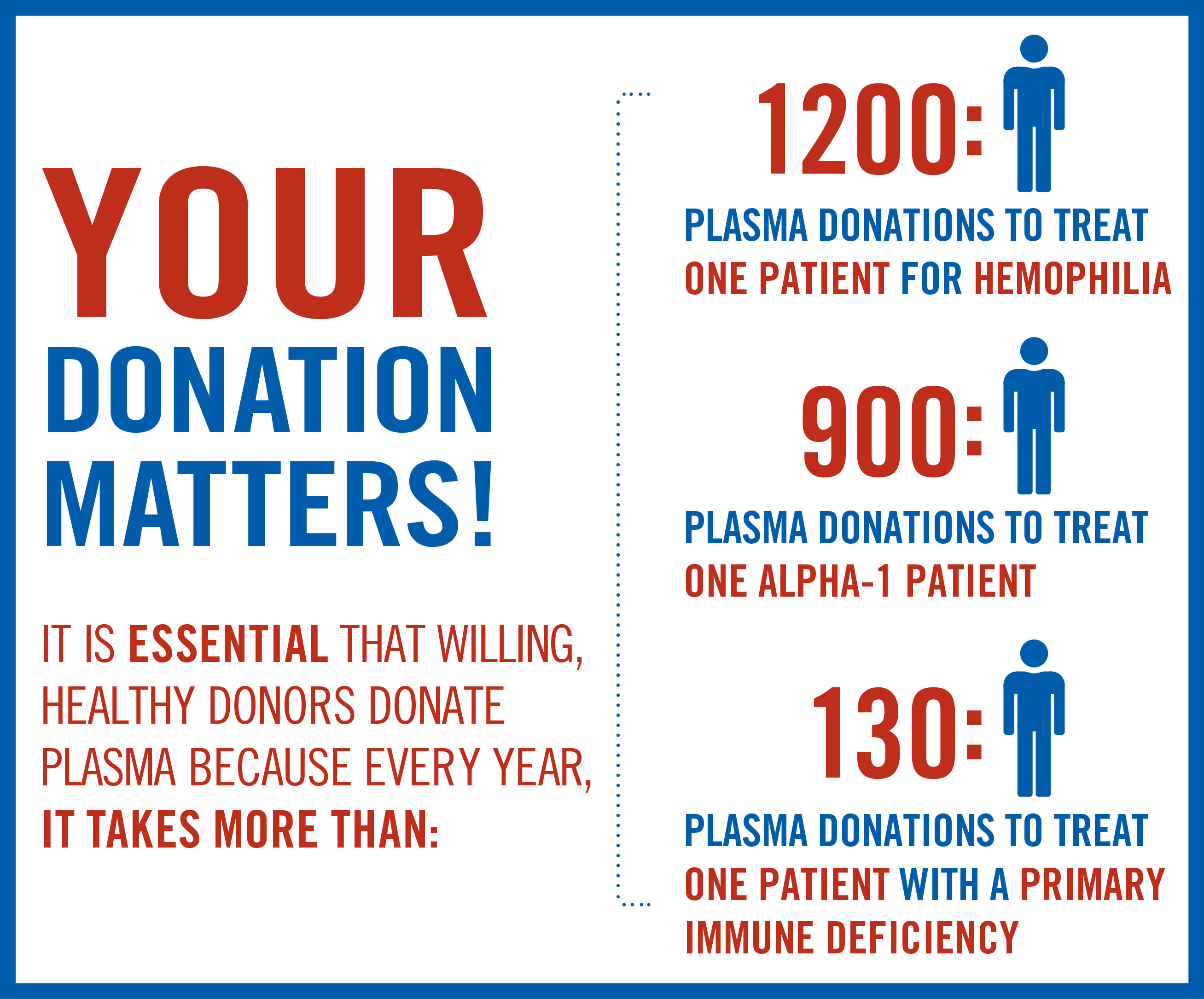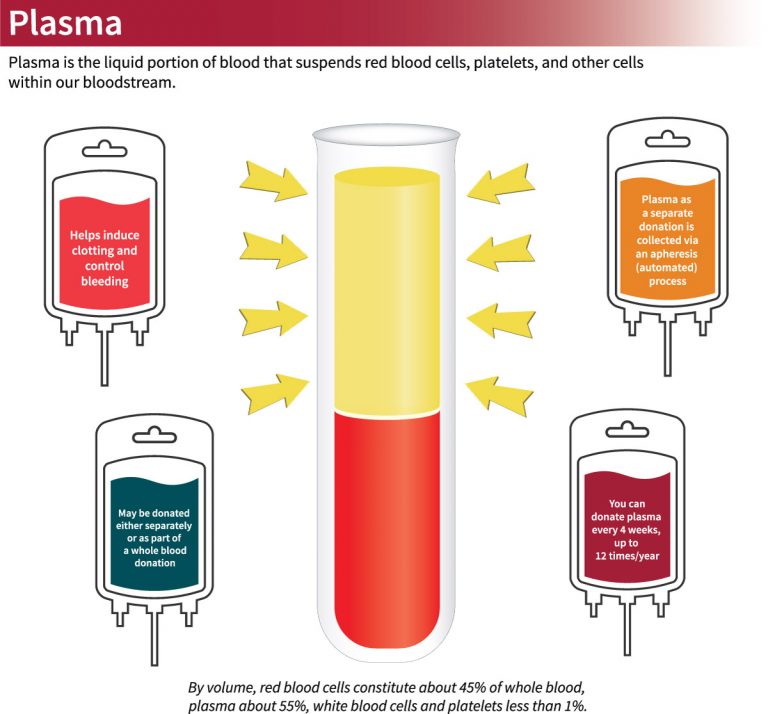What is Plasma Donation and How Does it Work?
Plasma donation is a vital process that involves collecting the liquid portion of blood, known as plasma, from donors. This plasma is then used to create life-saving therapies for patients with rare and serious diseases, such as hemophilia and immunodeficiency disorders. The plasma donation process typically takes about an hour and a half, during which time the donor’s blood is drawn, the plasma is separated, and the remaining blood components are returned to the donor.
The plasma is collected through a process called plasmapheresis, which involves separating the plasma from the other blood components using a specialized machine. The plasma is then frozen and shipped to manufacturing facilities where it is used to create a range of therapies, including clotting factor concentrates, immunoglobulins, and albumin.
Donating plasma is a safe and relatively painless process. Donors are carefully screened before each donation to ensure their safety and the quality of the plasma. The donation process is also closely monitored by trained medical professionals to minimize any potential risks.
Plasma donation is an important contribution to the medical community, as it helps to provide life-saving therapies for patients in need. By donating plasma, individuals can earn a steady income while also making a positive impact on the lives of others. For those wondering how much they can make a month donating plasma, the answer varies depending on several factors, including the location, frequency of donation, and individual characteristics.
On average, plasma donors can earn between $20 to $50 per donation, with some centers offering more for frequent donors or those with specific blood types. While the pay may not be substantial, it can add up over time, making plasma donation a viable option for those looking to earn a steady income.
How Much Can You Realistically Earn Donating Plasma?
The amount of money you can earn donating plasma varies depending on several factors, including the location, frequency of donation, and individual characteristics. On average, plasma donors can earn between $20 to $50 per donation, with some centers offering more for frequent donors or those with specific blood types.
Location plays a significant role in determining plasma donation pay rates. Donors in urban areas tend to earn more than those in rural areas, as the demand for plasma is higher in cities. Additionally, some states have higher pay rates than others, with California, Texas, and Florida being among the top-paying states.
Frequency of donation is another factor that influences pay rates. Donors who donate regularly, typically twice a week, can earn more than those who donate less frequently. Some centers also offer loyalty programs or bonuses for frequent donors, which can increase earnings.
Individual characteristics, such as weight, age, and medical history, can also impact pay rates. Donors with a higher body mass index (BMI) or those who are older may be eligible for higher pay rates, as their plasma is in higher demand.
It’s also worth noting that some plasma donation centers offer additional incentives, such as referral programs or special promotions, which can increase earnings. For example, some centers may offer a bonus for referring a friend or family member to donate plasma.
So, how much can you make a month donating plasma? Assuming an average pay rate of $30 per donation and a frequency of two donations per week, donors can earn around $240 per month. However, this amount can vary significantly depending on the factors mentioned above.
To give you a better idea, here are some estimated monthly earnings for plasma donors in different locations:
- California: $300-$400 per month
- Texas: $250-$350 per month
- Florida: $200-$300 per month
- Other states: $150-$250 per month
Keep in mind that these are estimated earnings and can vary depending on individual circumstances. It’s essential to research the specific pay rates and requirements for plasma donation centers in your area to get a more accurate idea of how much you can earn.
Top Paying Plasma Donation Centers: A Comparison
When it comes to plasma donation, not all centers are created equal. Some centers offer higher pay rates, more flexible scheduling, and additional incentives to attract and retain donors. In this section, we’ll compare some of the top paying plasma donation centers in the US, including Grifols, BioLife, and CSL Plasma.
Grifols is one of the largest plasma collection companies in the world, with over 200 centers across the US. They offer a competitive pay rate of up to $40 per donation, with the opportunity to earn more through their loyalty program. Grifols also offers a referral program, which allows donors to earn up to $50 for each friend or family member they refer.
BioLife is another major player in the plasma collection industry, with over 100 centers across the US. They offer a pay rate of up to $35 per donation, with the opportunity to earn more through their bonus program. BioLife also offers a flexible scheduling system, which allows donors to schedule appointments online or through their mobile app.
CSL Plasma is a leading plasma collection company with over 200 centers across the US. They offer a pay rate of up to $30 per donation, with the opportunity to earn more through their loyalty program. CSL Plasma also offers a referral program, which allows donors to earn up to $25 for each friend or family member they refer.
In addition to these top paying plasma donation centers, there are several other companies that offer competitive pay rates and incentives. Some of these companies include:
- Biotest Plasma: up to $30 per donation
- KEDPlasma: up to $25 per donation
- Plasma Biological Services: up to $20 per donation
When choosing a plasma donation center, it’s essential to consider not only the pay rate but also the center’s reputation, location, and scheduling flexibility. By doing your research and selecting a center that meets your needs, you can maximize your earnings and make the most of your plasma donation experience.
So, how much can you make a month donating plasma at these top paying centers? Assuming an average pay rate of $30 per donation and a frequency of two donations per week, donors can earn around $240 per month at Grifols, $200 per month at BioLife, and $180 per month at CSL Plasma. However, these amounts can vary depending on individual circumstances and the specific center’s policies.
Maximizing Your Earnings: Tips and Strategies for Frequent Donors
As a frequent plasma donor, you can maximize your earnings by following a few simple tips and strategies. By staying eligible, managing your schedule, and taking advantage of referral programs, you can increase your earnings and make the most of your plasma donation experience.
One of the most important things you can do to maximize your earnings is to stay eligible to donate. This means maintaining a healthy lifestyle, including a balanced diet, regular exercise, and adequate sleep. You should also avoid certain medications and substances that can affect your eligibility to donate.
Managing your schedule is also crucial to maximizing your earnings. Try to donate at the same time every week, and make sure to schedule your appointments in advance. This will help you avoid conflicts and ensure that you can donate as frequently as possible.
Referral programs are another great way to increase your earnings. Many plasma donation centers offer referral programs that reward you for referring friends and family members to donate. These programs can be a great way to earn extra money, and they can also help you contribute to a good cause.
Here are some additional tips and strategies for maximizing your earnings as a frequent plasma donor:
- Donate at peak hours: Many plasma donation centers offer higher pay rates during peak hours, such as weekdays or weekends.
- Take advantage of bonus programs: Some plasma donation centers offer bonus programs that reward you for donating a certain number of times within a certain period.
- Use online scheduling tools: Many plasma donation centers offer online scheduling tools that make it easy to schedule appointments and manage your donation schedule.
- Stay informed: Stay up-to-date with the latest news and information about plasma donation, including changes to pay rates and eligibility requirements.
By following these tips and strategies, you can maximize your earnings as a frequent plasma donor and make the most of your plasma donation experience. Remember to always prioritize your health and safety, and to donate responsibly.
So, how much can you make a month donating plasma if you follow these tips and strategies? Assuming an average pay rate of $30 per donation and a frequency of two donations per week, frequent donors can earn around $240 per month. However, this amount can vary depending on individual circumstances and the specific center’s policies.
The Benefits of Donating Plasma: More Than Just a Paycheck
While the financial rewards of plasma donation are certainly attractive, there are many other benefits to donating plasma beyond the paycheck. In this section, we’ll explore some of the ways that plasma donation can positively impact your life and the lives of others.
One of the most significant benefits of plasma donation is the opportunity to contribute to life-saving medical treatments. Plasma is used to create therapies for patients with rare and serious diseases, such as hemophilia and immunodeficiency disorders. By donating plasma, you can help ensure that these patients receive the treatments they need to live healthy and fulfilling lives.
Another benefit of plasma donation is the sense of community that comes with it. Plasma donation centers often have a strong sense of camaraderie among donors, who share a common goal of helping others. You may also have the opportunity to meet and connect with other donors who share similar interests and values.
In addition to the sense of community, plasma donation can also be a convenient and flexible way to earn a steady income. Many plasma donation centers offer flexible scheduling options, including evening and weekend appointments, which can be ideal for students, working professionals, or anyone with a busy schedule.
Finally, plasma donation can be a rewarding and fulfilling experience that can help you feel more connected to your community and more confident in your ability to make a positive impact. By donating plasma, you can take pride in knowing that you are helping to make a difference in the lives of others.
So, how much can you make a month donating plasma, and what are the benefits beyond the financial rewards? While the financial rewards of plasma donation can vary depending on the center and your individual circumstances, the benefits of plasma donation extend far beyond the paycheck. By donating plasma, you can contribute to life-saving medical treatments, gain a sense of community, enjoy a convenient and flexible donation process, and feel more connected to your community and more confident in your ability to make a positive impact.
In the next section, we’ll explore the eligibility requirements and donation process for plasma donation, including the step-by-step process of donating plasma and what to expect during and after the donation process.
Eligibility Requirements and the Donation Process: What to Expect
To be eligible to donate plasma, you must meet certain requirements, which vary depending on the plasma donation center. Here are some general eligibility requirements:
- Age: You must be at least 18 years old to donate plasma.
- Weight: You must weigh at least 110 pounds to donate plasma.
- Medical History: You must be in good health and pass a medical examination to donate plasma.
- Travel History: You must not have traveled to certain countries or regions that are at risk for infectious diseases.
- Medications: You must not be taking certain medications that can affect your eligibility to donate plasma.
Once you have met the eligibility requirements, you can begin the donation process. Here is a step-by-step guide to what you can expect:
Registration: You will need to register with the plasma donation center and provide identification and medical history information.
Medical Examination: You will undergo a medical examination to ensure that you are healthy enough to donate plasma.
Donation Process: The donation process typically takes about an hour and a half. You will be seated comfortably and a needle will be inserted into a vein in your arm. Your plasma will be collected and the remaining blood components will be returned to your body.
Post-Donation Care: After the donation process, you will be monitored for a short period of time to ensure that you are feeling well. You will also be provided with snacks and drinks to help you recover.
It’s essential to note that the eligibility requirements and donation process may vary depending on the plasma donation center. It’s always best to check with the center directly for specific requirements and procedures.
Now that you know the eligibility requirements and the donation process, you may be wondering how much you can make a month donating plasma. The answer varies depending on the center and your individual circumstances. However, with the right information and preparation, you can make the most of your plasma donation experience and earn a steady income while contributing to a good cause.
Common Questions and Concerns: Addressing Your Plasma Donation Worries
As with any medical procedure, plasma donation can raise several questions and concerns. In this section, we’ll address some of the most common worries potential donors may have, providing reassurance and facts to alleviate any concerns.
Is plasma donation safe?
Yes, plasma donation is a safe and well-established medical procedure. The equipment used is sterile, and the staff is trained to ensure a safe and comfortable donation process.
What are the side effects of plasma donation?
Common side effects of plasma donation include fatigue, dizziness, and bruising at the needle site. These side effects are usually mild and temporary, and they can be minimized by following the center’s guidelines for post-donation care.
How does plasma donation affect my health?
Plasma donation is a safe and healthy process that does not affect your overall health. The plasma is replaced by your body within 24-48 hours, and the remaining blood components are returned to your body during the donation process.
Can I donate plasma if I have a medical condition?
It depends on the medical condition. Certain conditions, such as diabetes or high blood pressure, may not be a barrier to plasma donation. However, other conditions, such as HIV or hepatitis, may make you ineligible to donate. It’s essential to discuss your medical history with the plasma donation center to determine your eligibility.
How much can I make a month donating plasma?
The amount you can make a month donating plasma varies depending on the center, your location, and your individual circumstances. However, with the right information and preparation, you can make the most of your plasma donation experience and earn a steady income while contributing to a good cause.
By addressing these common questions and concerns, we hope to provide reassurance and facts to alleviate any worries potential donors may have. Plasma donation is a safe and rewarding process that can provide a steady income stream while contributing to life-saving medical treatments.
Conclusion: Turning Plasma Donation into a Steady Income Stream
In conclusion, plasma donation is a viable option for individuals looking to earn a steady income while contributing to a good cause. By understanding the process of plasma donation, the factors that influence pay rates, and the benefits of donating plasma, individuals can make informed decisions about their participation in this process.
As we’ve discussed, the amount you can make a month donating plasma varies depending on the center, your location, and your individual circumstances. However, with the right information and preparation, you can maximize your earnings and make the most of your plasma donation experience.
Plasma donation is not only a way to earn a steady income, but it’s also a way to contribute to life-saving medical treatments, gain a sense of community, and enjoy a convenient and flexible donation process. By donating plasma, you can make a positive impact on the lives of others while also improving your own financial situation.
If you’re considering plasma donation as a way to earn a steady income, we encourage you to do your research, understand the process, and make informed decisions about your participation. With the right mindset and preparation, you can turn plasma donation into a reliable source of income and make a positive impact on the world.
Remember, plasma donation is a safe and rewarding process that can provide a steady income stream while contributing to a good cause. By donating plasma, you can make a difference in the lives of others and improve your own financial situation. So why not consider plasma donation as a way to earn a steady income and make a positive impact on the world?








